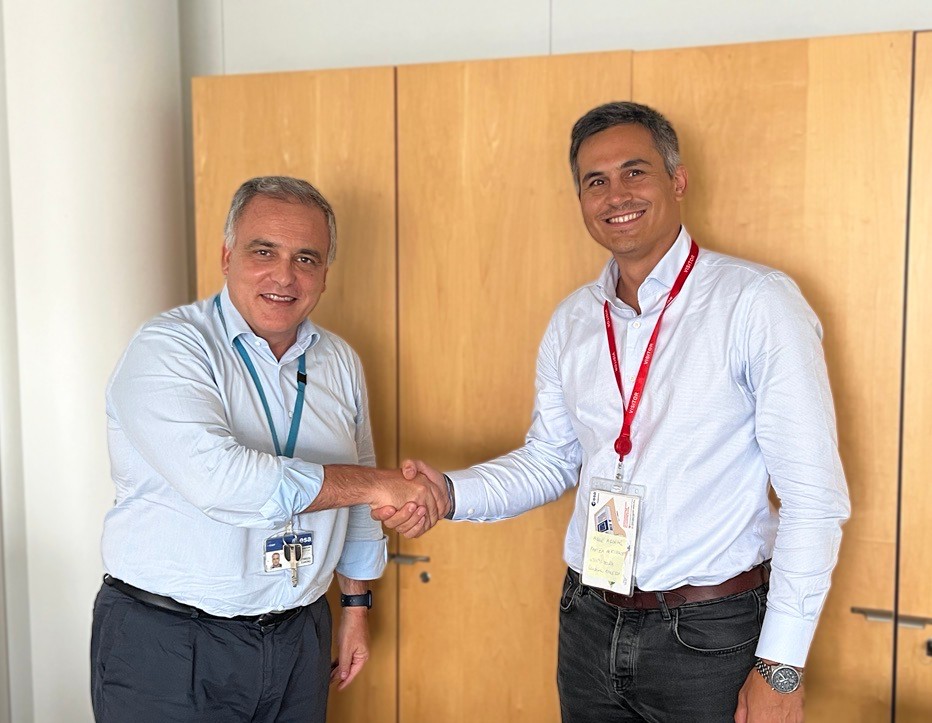ESA has entrusted Pangea Aerospace with the Very High Thrust Engine preparation activities
Pangea

- Pangea Aerospace has been tasked by the European Space Agency (ESA) to identify de-risking technologies and design a Very High Thrust rocket engine for future European launchers.
- The company will conduct a detailed market analysis to identify current and future needs, as well as design a very high thrust engine of over 2MN of thrust.
- Being specialized in developing propulsion systems, Pangea is well positioned to create a propulsion building block that can be adapted to different launch vehicles; thereby fostering European industry competitiveness.
- Pangea Aerospace was also selected a few weeks ago to be part of the NewSpace Advisory Board for ESA, positioning itself as a key player in the future of the European industry.
Pangea Aerospace has been tasked by the European Space Agency (ESA) to design and identify de-risking technologies for a Very High Thrust rocket engine for future European launchers.
The need is driven by the investigation, led by ESA, of possible future space transportation capability in Europe for the medium-term, an opportunity that would provide a significant pull for technological innovation also applicable and beneficial to the rest of the European space transportation sector. The goal is to foster innovation and enhance the competitive edge of the European space industry by creating a very high-thrust propulsion system ready to meet the growing needs for diverse launch systems.
First engine approach
The engine proposed by Pangea, called Kronos, is being designed to be used on different launch vehicles, both on boosters as well as upper stages, prioritizing adaptability, cost, reusability, and performance. While the final design will be consolidated following market analyses, the initial baseline envisions the full-flow staged combustion cycle, necessary to meet the thrust density requirements of super heavy-lift vehicles. During the project, the sub-systems will be identified, and the de-risking activities will be planned to reach technical maturity in staged combustion in Europe and close the gap with state-of-the-art rocket propulsion worldwide.
Collaboration with European partners
Pangea will carry out this project leading a consortium of strategic partners from across Europe, each bringing complementary expertise. The consortium includes Pangea Aerospace as the lead and responsible for core propulsion technology, with Safran and Sabca providing propulsion subsystems technology, Apco Technologies handling logistics and integration, Spacedreams for testing, Empa and Politecnico di Milano for materials and additive manufacturing, and Latitude as a launch service provider formulating their interoperability needs as launchers provider.
«We are proud that ESA has entrusted us with the crucial mission of preparing a solution for future European heavy launchers. Our business model and positioning as engine developers have paved the way for understanding what’s needed in the market and creating competitive propulsion solutions that are not constrained by any launch vehicle design. So, we take on this challenge with this mindset and plan to put all our efforts into creating the best solution for Europe. Also, as we always promote, collaborating with other key actors of the ecosystem enables us to further conceive a realistic, optimized, and cost-effective solution for the European space industry» says Adria Argemí, founder and CEO of Pangea Aerospace.
Pangea Aerospace selected to be part of the ESA’s NewSpace Advisory Board
The company has also announced that its CEO, Adrià Argemí, has been chosen to be part of the NewSpace Advisory Board to ESA Director General, Josef Aschbacher. This high-level body of industry representatives is meant to support ESA executives in developing commercialization and industrial policy and guiding the agency’s transformation process to better align with NewSpace needs. This news reflects the key positioning the company is gaining in the European space industry and the important role it will play in the future technological roadmap.